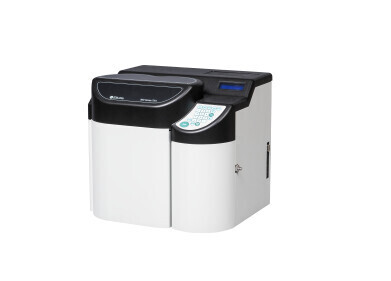Gas Chromatography
Can Dogs Really Sniff Out Cancer?
Apr 11 2018
Despite medical research, cancer is still one of the biggest causes of early deaths in the UK. In 2015, there were over 350,000 new cases of cancer diagnosed in the UK, and over 160,000 deaths from cancer in 2014. Lung cancer was a large contributor to these statistics — with over 46,000 new cases of lung cancer and almost 36,000 deaths — almost 100 deaths every day — from lung cancer according to Cancer Research UK.
The statistics suggest that for lung cancer, around 89% of cases are preventable. Lung cancer is the most probable cause of cancer deaths in the UK, with only 5% of people diagnosed with lung cancer surviving for 10 years or more — although mortality rates are expected to fall in the next decade. One of the factors that influences your outcome from a cancer diagnosis is how early the cancer is detected. One team has investigated the possibility of using dogs to help diagnose lung cancers earlier.
A keen sense of smell?
Previous researchers have concluded that dogs can identify specific odours in samples of a person’s breath, blood and urine that indicates the person has cancer. Some studies have shown good results in this research with quite high sensitivities (71–99%) and specificities (78-98%) — conversely, other studies have suggested that results from research reveals lower sensitivities (3-71%) and specificities (8-53%). This leads to researchers questioning whether there might be specific volatile organic compounds (VOCs) that are specific for a cancer cell or metabolite.
In research published in Frontiers in Veterinary Science — A Proof of Concept: Are Detection Dogs a Useful Tool to Verify Potential Biomarkers for Lung Cancer? — a team from Germany set out to find out if dogs really can detect potential cancer biomarkers. They carried out a proof of concept study which is where researchers set out to show how feasible an idea or theory is to study. In this case, the team suggest that in theory, dogs could be used, after training, to detect biomarkers for lung cancer. What did the team do?
Training day for dogs
They carried out the study by collecting breathe samples from 30 healthy patients and 30 people with lung cancer. They also prepared samples of VOCs known to be present in cancer suffers breathe — 1-butanol, 2-butanone, 2-pentanone and hexanal. Gas chromatography is one of the key techniques used to analyse VOC samples — this article describes shows how the technique can be made even more powerful, Improving Workflow in Group-Type GC×GC Analysis of Petrochemicals.
The dogs were trained to spot the cancer samples and were rewarded for a correct spot. Of nine samples from lung cancer patients, the dogs used could identify 8 or 9 samples as positive, but the results were lower for negative (healthy) samples. The study authors acknowledge the low number of dogs and samples — but suggest that trained detection dogs could be used to spot biomarkers for lung cancer.
Man’s best friend helps again.
Digital Edition
Chromatography Today - Buyers' Guide 2022
October 2023
In This Edition Modern & Practical Applications - Accelerating ADC Development with Mass Spectrometry - Implementing High-Resolution Ion Mobility into Peptide Mapping Workflows Chromatogr...
View all digital editions
Events
Jan 20 2025 Amsterdam, Netherlands
Feb 03 2025 Dubai, UAE
Feb 05 2025 Guangzhou, China
Mar 01 2025 Boston, MA, USA
Mar 04 2025 Berlin, Germany














